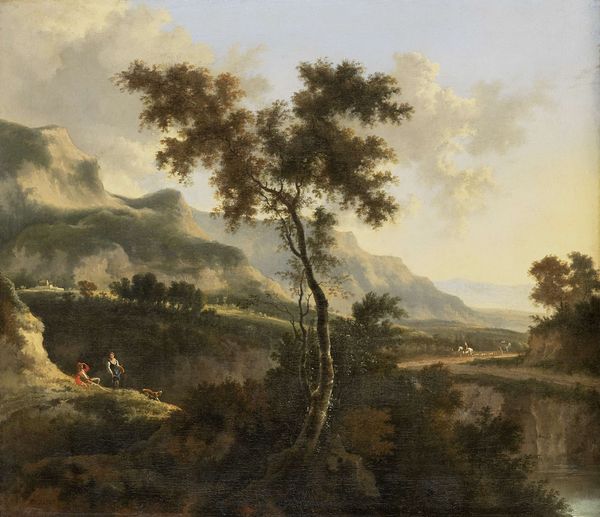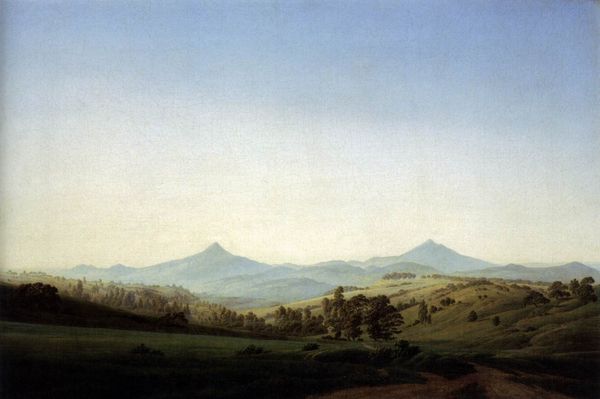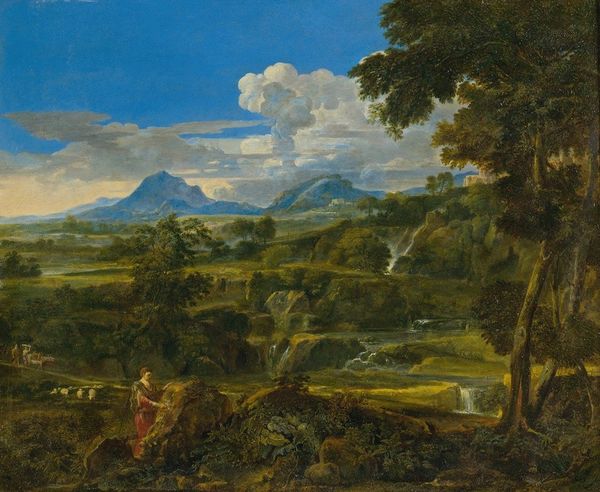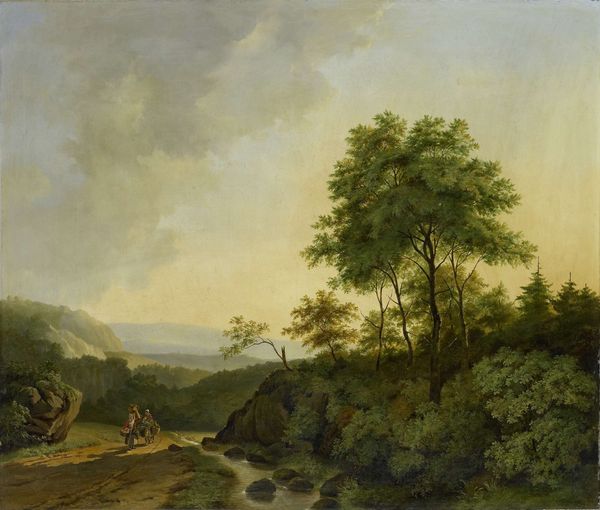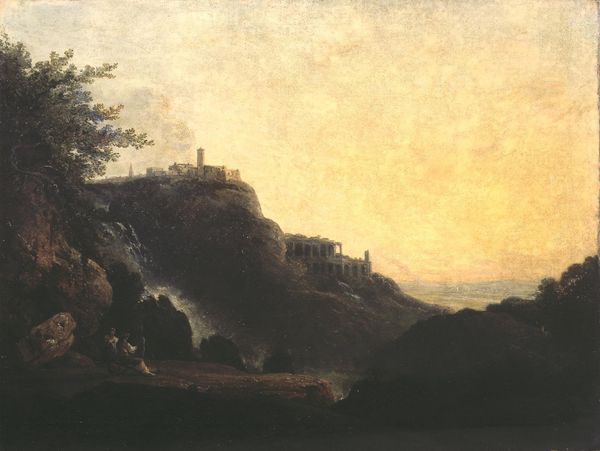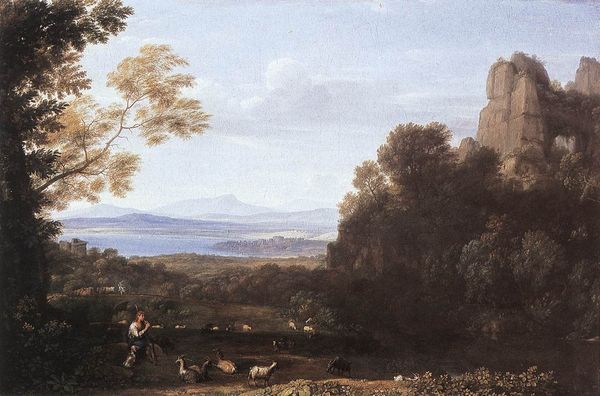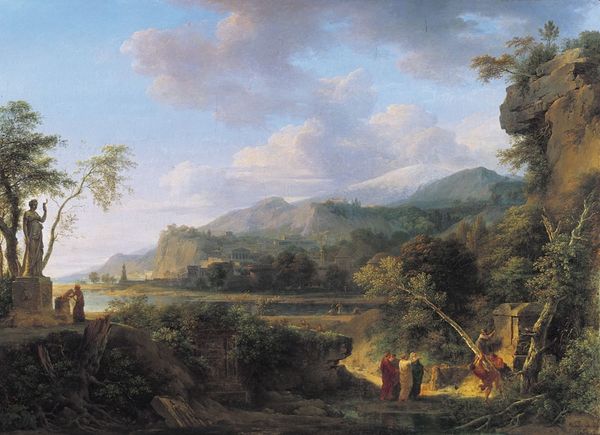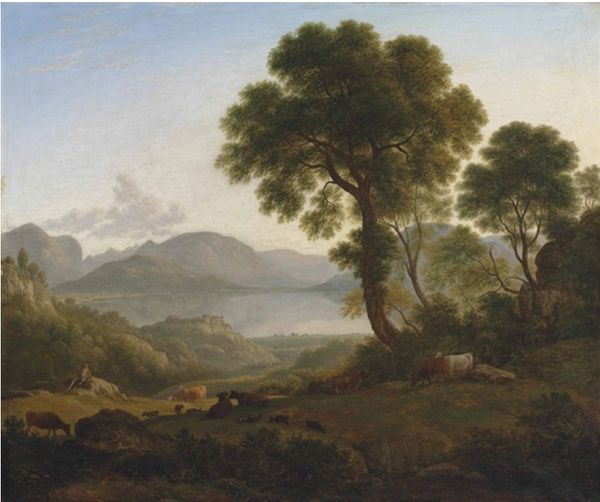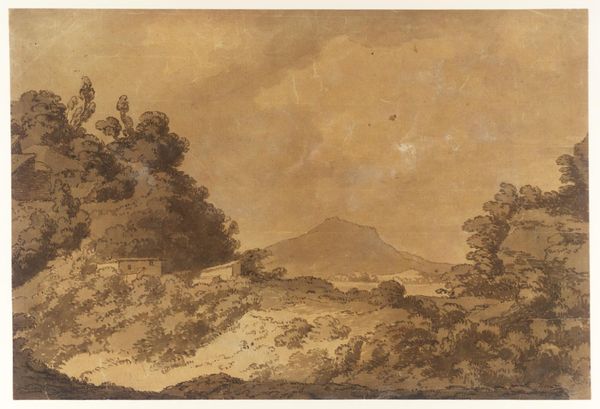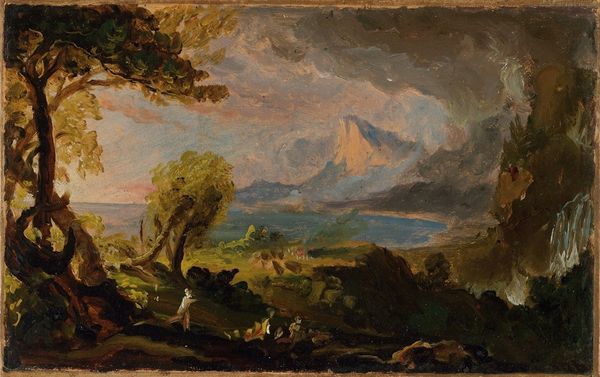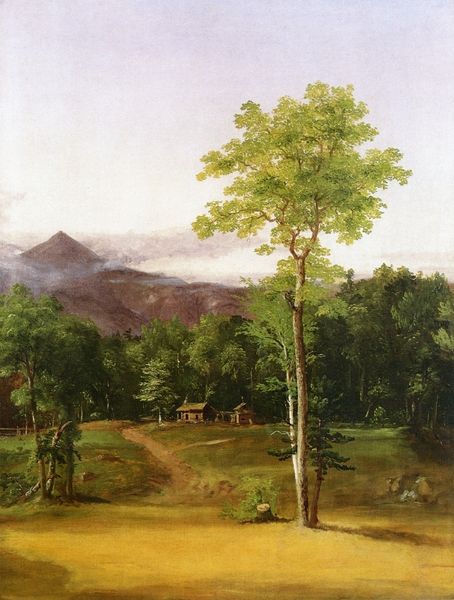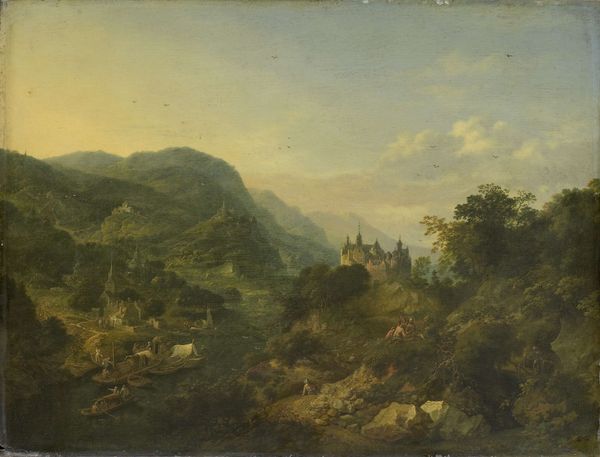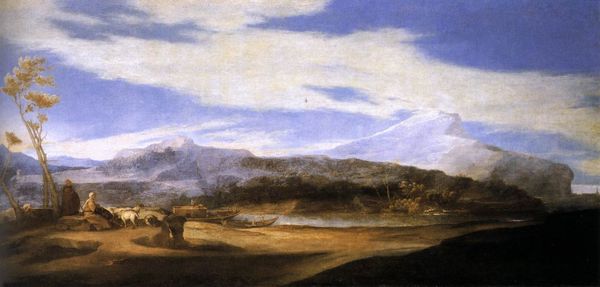
#
tree
#
sky
#
abstract painting
#
impressionist landscape
#
possibly oil pastel
#
oil painting
#
acrylic on canvas
#
underpainting
#
mountain
#
naturalistic tone
#
painting painterly
#
watercolor
#
expressionist
Copyright: Public domain
Thomas Jones painted Mount Vesuvius from Torre dell’Annunziata near Naples in the late 18th century. His painting offers us a window into how the natural world was being reimagined in art, reflecting broader social and cultural shifts of the time. Jones, like many artists of his era, was drawn to Italy. The country was a site of classical history and dramatic landscapes. Vesuvius, a symbol of nature's power and unpredictability, became an icon in European art. The painting’s composition, with its careful arrangement of trees, buildings, and the distant volcano, reveals a growing interest in the sublime. This aesthetic category mixed awe and terror, reflecting a changing attitude towards nature. No longer just a source of resources, it was now a force that could inspire both wonder and fear. To fully understand paintings like this, we delve into travel accounts, scientific studies of the period, and the writings of philosophers. By connecting artistic expression with the broader intellectual and social currents of the time, we gain a richer understanding of its meaning and significance.
Comments
No comments
Be the first to comment and join the conversation on the ultimate creative platform.
